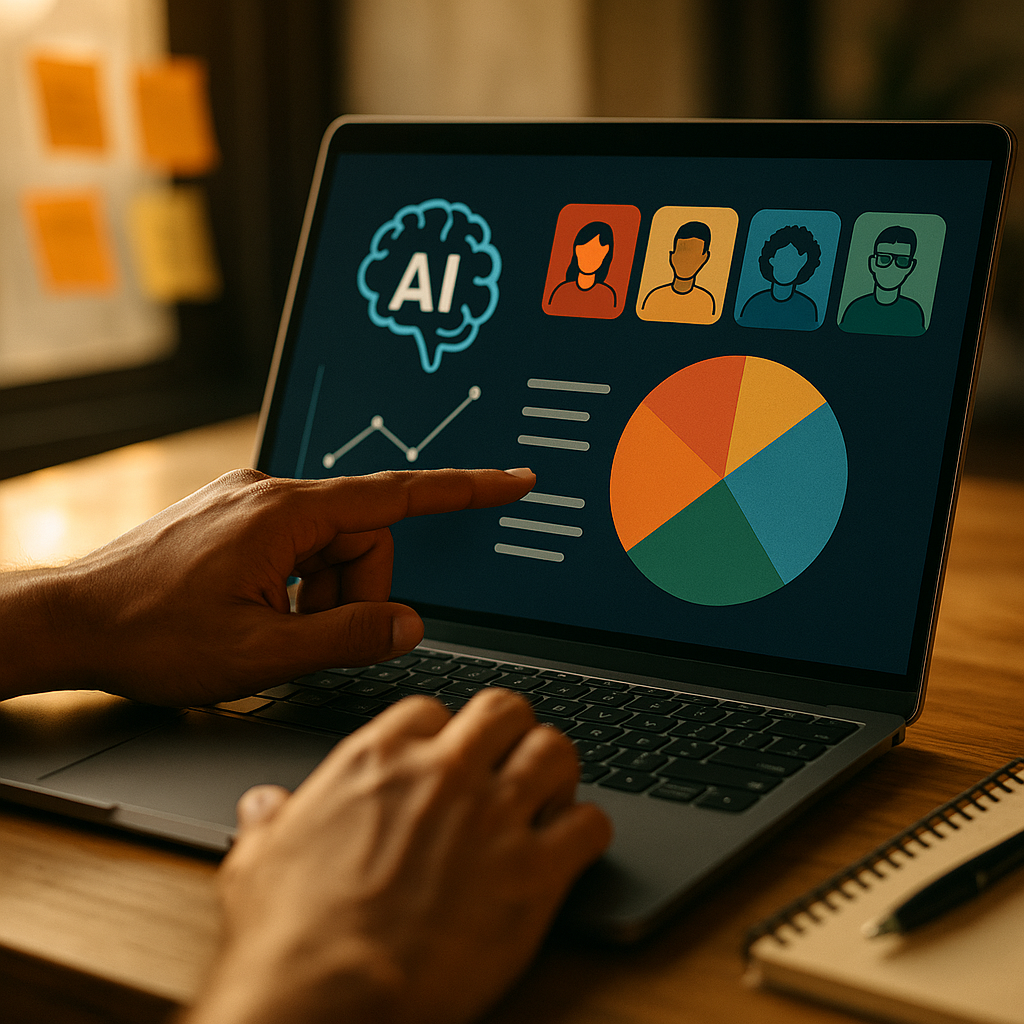Using AI to analyze and optimize your content for different customer segments is now essential for brands aiming to personalize marketing at scale. By leveraging advanced tools, businesses can tailor messages and experiences for improved engagement, conversions, and loyalty. Wondering how to deploy AI for segment-specific content optimization? Let’s explore best practices and actionable strategies for this evolving landscape.
AI-Powered Content Personalization for Customer Segments
AI-powered content personalization enables brands to deliver messages tailored to each customer segment’s unique preferences, behaviors, and needs. By analyzing large datasets—from purchase histories to website interactions—AI tools can recommend content variations suited to specific groups. This approach not only increases engagement but also ensures customers receive highly relevant information, fostering stronger relationships and driving repeat business.
Consider a retail brand serving both Gen Z and Baby Boomers. AI can identify platform usage patterns, preferred product features, and communication styles that resonate with each segment. Content is then dynamically adjusted—Gen Z receives short-form video tutorials via social media, while Boomers encounter detailed guides by email. This personalized approach results in higher open, engagement, and conversion rates across the board.
Leveraging Customer Data Analytics with AI Tools
Effective content optimization begins with actionable customer insights. AI platforms utilize advanced customer data analytics to segment audiences according to demographic, psychographic, or behavioral attributes. Natural language processing (NLP) further uncovers what content topics and formats resonate most with particular groups.
For instance, AI tools like Google Analytics 4 and HubSpot’s AI Content Assistant process real-time interactions, highlighting trends such as:
- Which articles drive the longest page visits among tech-savvy professionals
- Which products are most frequently browsed by eco-conscious consumers
- What calls-to-action convert millennials versus Gen X shoppers
Armed with this intelligence, marketers can design targeted content strategies that speak to customer priorities.
Optimizing Content Strategies with AI Recommendations
Once customer segments are defined, the next step is using AI-powered content optimization to tailor messaging and formats. Machine learning platforms assess existing assets and recommend improvements, often in real time. These may include adjusting headlines, modifying visuals, or rewriting body copy for relevance and clarity.
AI-enabled optimization tools—like Jasper or SurferSEO—analyze top-ranking industry content, providing keyword, readability, and structure suggestions for each segment’s interests. For example, an AI engine might flag that a B2B audience prefers data-rich infographics, while a lifestyle audience responds better to story-driven blog posts with vibrant imagery. Implementing these changes increases user engagement, reduces bounce rates, and supports higher conversion rates.
Testing and Measuring AI-Driven Content Performance
Continuous improvement hinges on robust A/B testing and measurement. With AI, marketers can automate content experiments at scale—rapidly adjusting copy, visuals, or calls-to-action for specific customer segments, then observing how each version performs.
AI solutions track outcomes such as click-through rates, dwell time, form completions, and conversion events. Predictive analytics algorithms project future behavior based on customer responses, enabling even more precise targeting. According to a 2025 Gartner survey, 76% of high-performing marketing teams now use AI-driven testing platforms for content refinement, proving the value of ongoing optimization.
Ensuring Ethical Use and Data Privacy in AI-Enabled Content Marketing
As businesses accelerate AI adoption for customer segmentation, ethical use and data privacy take center stage. Brands must be transparent about their data collection practices, clearly communicating how information is used to personalize content. Compliance with regulations such as the General Data Protection Regulation (GDPR) is non-negotiable.
Best practices include:
- Regularly auditing AI systems to avoid bias in content recommendations
- Providing users with control over their data and personalization settings
- Training teams on ethical data handling and responsible content optimization
By prioritizing trust and transparency, companies ensure that AI-driven content strategies benefit both their business and their customers.
Integrating AI Content Optimization into Your Workflow
To fully realize the potential of AI for segment-specific content, integration with existing workflows is key. Foster cross-functional collaboration between marketing, data science, and IT departments. Invest in user-friendly AI platforms that offer clear dashboards and actionable insights for non-technical team members.
Create feedback loops so that learnings from AI-driven tests inform content calendars and future campaigns. Document best practices and successful templates for each segment, ensuring consistency across channels—whether it’s website, email, or social media. With the right structure and mindset, AI becomes a seamless extension of your brand’s content ecosystem.
Conclusion
Using AI to analyze and optimize your content for different customer segments enables unprecedented personalization and efficiency. When combined with ethical practices and robust analytics, brands can deliver targeted content that deeply resonates with each audience. Ready to future-proof your marketing? Embrace AI-driven optimization and watch your customer engagement and ROI soar.
FAQs: AI and Content Optimization for Customer Segments
-
How does AI improve content personalization for different customer segments?
AI analyzes data patterns across your customer base, helping create tailored content that matches each segment’s preferences, improving relevance and engagement.
-
What types of data can AI use to segment customers for content optimization?
AI leverages demographic, behavioral, psychographic, and transactional data to effectively segment and target customer groups with specific content strategies.
-
Can small businesses benefit from AI-driven content optimization?
Absolutely. Many AI tools are built for scalability and user-friendliness, allowing small businesses to personalize content and compete with larger brands.
-
Is customer data used by AI platforms secure?
Reputable AI platforms follow strict data security standards and often include options for anonymization and user consent management, ensuring compliance and protection.
-
How often should I review and update my AI-driven content strategies?
Regular review—at least quarterly—is recommended, as AI insights and customer behaviors evolve rapidly. Continuous testing and optimization yield the best results.
